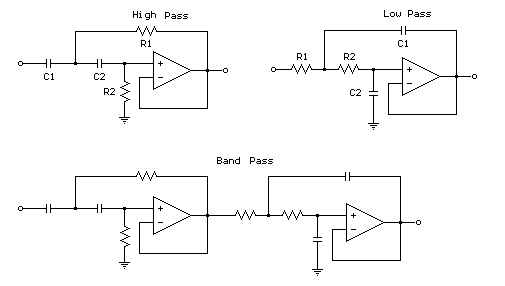Second Order Active Filters
2nd order active filtering has two main advantages:
- High impedance input, low impedance output
- greater attenuation at high range (-40dB/decade as opposed to -20dB/decade for RC filter)
The high input impedance provided by an op amp circuit protects the instrument providing the signal from passing excessive current which could cause a voltage drop in the measurement signal or damage to the instrument itself.
Because the filter is second order, the rolloff after the cutoff frequency on a bode plot of a low pass filter for example, is -40 dB/decade as opposed to -20 dB/decade for a first order (RC) filter which means significantly greater attenuation outside the pass band and a sharper cutoff. This can be very useful if the noise frequency is close to the desired signal frequency.
Where the cutoff frequency for both high and low pass filters in Hz is:
References:
http://en.wikipedia.org/wiki/Sallen_Key_filter

